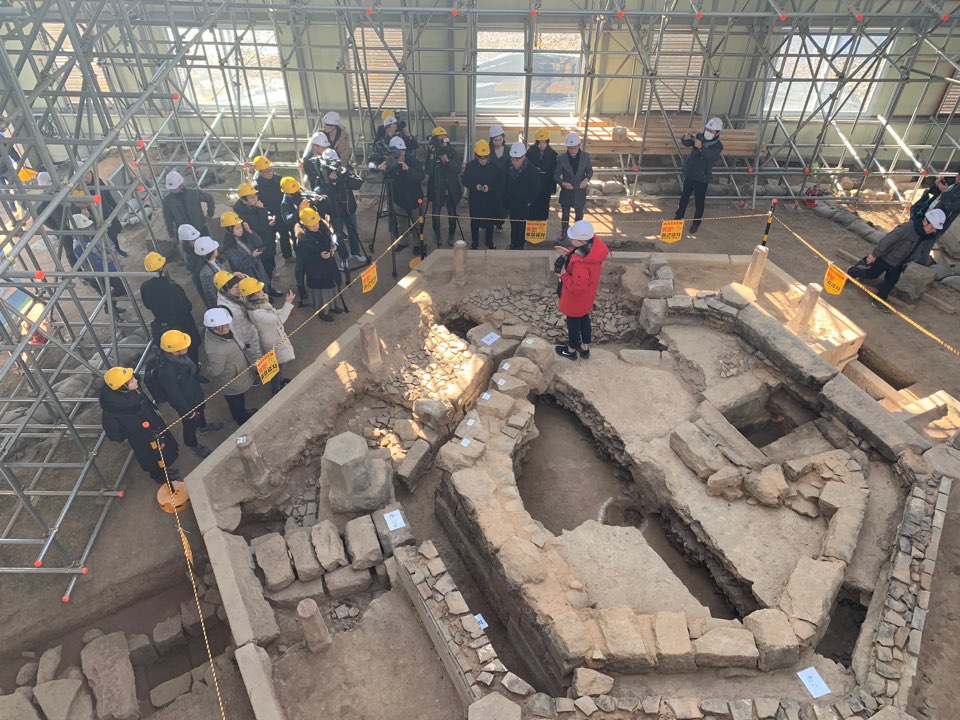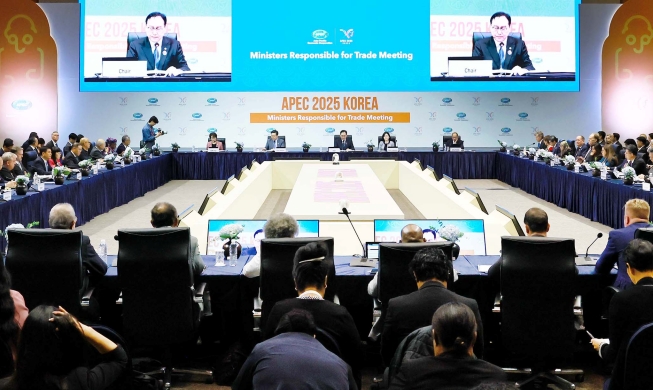
The lovely scenery at Hywangwonjeong Pavilion in Gyeongbokgung Palace changes depending on the season. The bridge across the pond is called Chwihyanggyo. (Korea.net DB)
By Jung Joo-ri and Lee Jihae
The historical Hyangwonjeong Pavilion at Gyeongbokgung Palace, a popular photo spot for visitors in Seoul, has the traditional Korean system of heated floors called ondol, according to the results of an excavation.
The Cultural Heritage Administration (CHA) on Nov. 20 announced in the results of this year's study of the pavilion that pivotal components of ondol in the floors were found.
Ondol creates and transfers heat from agungi, a firebox in which firewood is burned, through wide flat stones under the floor called goodeuljang.

A Cultural Heritage Administration official on Nov. 20 tells reporters at the excavation site of Hywangwonjeong Pavilion of Gyeongbukgung Palace about the discovery of ondol in the pavilion's floors. (Cultural Heritage Administration)
The structure of the ondol was also unique. Most traditional Korean structures have ondol spread throughout floors, but the pavilion only had it in the edges of its hexagonal structure. The excavation confirmed earlier assumptions that Hyangwonjeong had ondol.
Believed to have been built between 1867 and 1873 during King Gojong's reign, the two-storied pavilion is by the lake at the palace garden. The structure has been restored several times since 1945 but continuous signs of tilting and erosion led to its latest restoration, which began last year in November and is set for completion in July next year.
"The recent excavation shows the unique ondol structure of Hyangwonjeong Pavilion, which had been a mystery, and the causes of its safety threats. These findings are huge," the CHA said.
etoilejr@korea.kr
